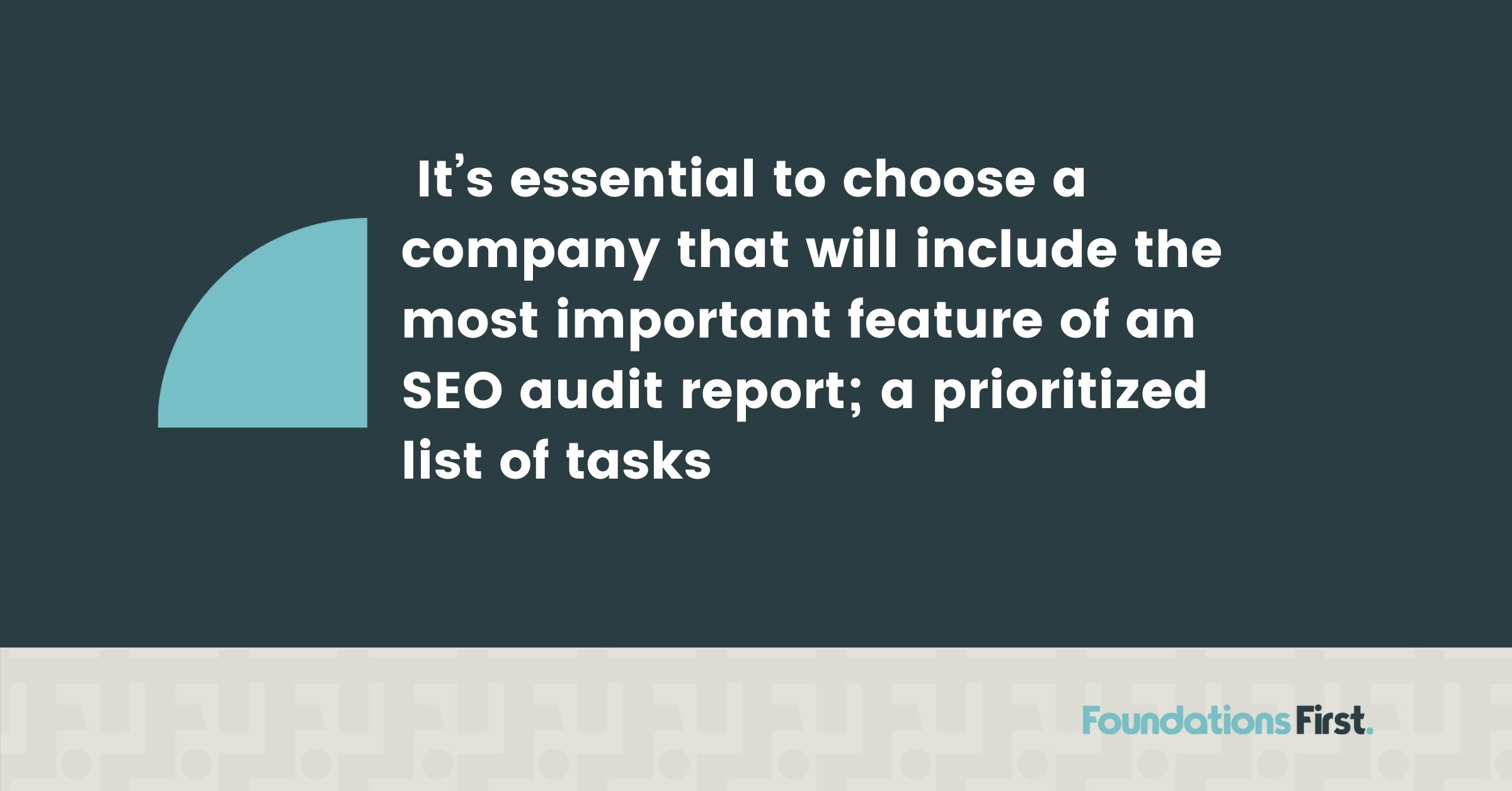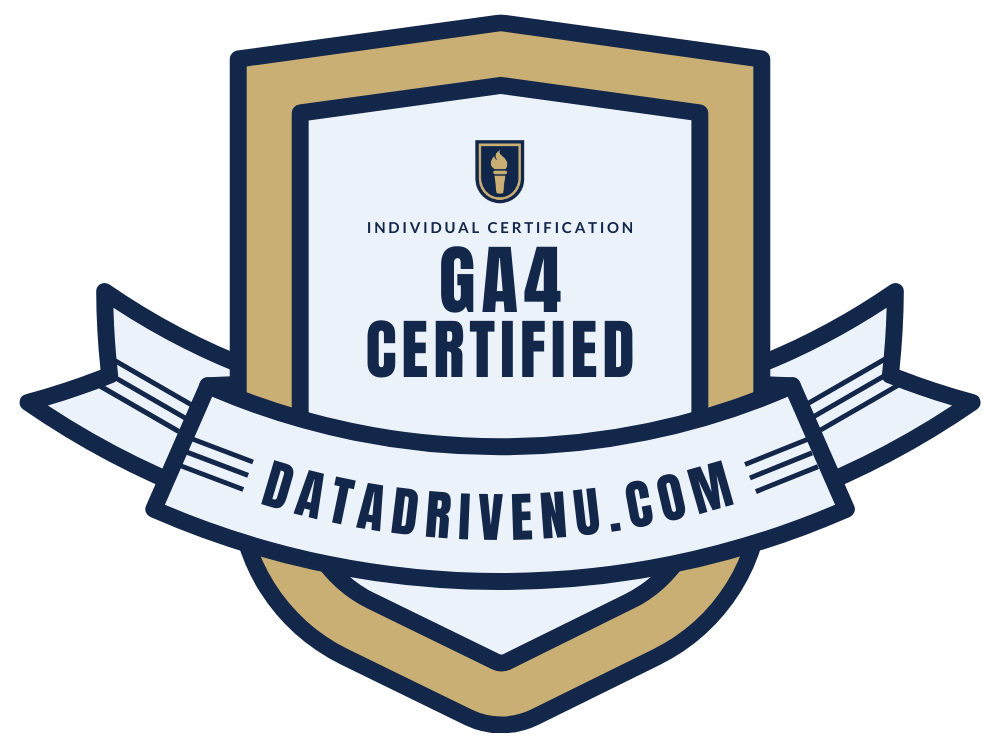5 Reasons SEO Audits Should Prioritize Tasks

A search engine optimization (SEO) audit gathers and analyzes a lot of valuable data. It’s then up to you to use that information to make marketing decisions that will improve organic search results, leads, and sales.But as you turn glossy page after page of charts and graphs, your eyes can gloss over as well. Where do you begin? Do you start with the data on competitor keywords? Or should you first tweak your site’s internal and external links?
SEO audit reports can be overwhelming. That’s why when you’re shopping around for an SEO/marketing consultant to prepare an audit for you, it’s essential to choose a company that will include the most important feature of an SEO audit report; a prioritized list of tasks. Sure, spiffed-out packets and slide presentations are impressive. But you need an SEO expert to take you by the hand and lead you forward. A prioritized list is a compass in that guiding hand.
Prioritized lists educate you on SEO/digital marketing best practices.
Part of the job of a good SEO expert is that of an educator. Think of the SEO audit report as the teaching tool. Working from that, your SEO teacher should lead you to an understanding of:
- what specific findings in the audit are most important to improving your SEO.
- why one finding may be more critical to your SEO outcome than some other indicator.
- where relationships exist in the data and why those relationships are more important than single data points.
- how to implement cross-channel collaboration to produce long-term SEO change.
- when to make each prioritized change for maximum SEO effectiveness.
A prioritized list gives you a set time frame.
Depending upon your needs and level of SEO knowledge, a prioritized list should set out a task plan with benchmarks for a 6 to 12-month time frame. If your website needs a wholesale redo, it’s like cramming too many friends and then a couple hitchhikers into a VW minibus. Your SEO progress is like that sluggish VW when heading up a grade. Gear down and take it slowly.
Keep in mind that any priority task list requires agility. Even when the changes you need to make are minimal, SEO work is fluid. Tech changes, your successes, and ever-shifting market forces can reset priorities. Remain as flexible as your pals in that VW minibus.
A prioritized list helps increase leads and sales.
The SEO audit should lead you to small and large fixes. Obviously, if your site isn’t ranking in organic searches, your SEO audit should give you some hard data on why. Larger fixes should be focused around message and content that will increase leads and sales. If not, you’ve wasted time and money.
Small fixes are technical tweaks. For SEO, a tweak might be adding appropriate keywords to title tags. That technical tweak is important for optimization, but will that alone increase leads and sales? Likely not without further adjustments.
Larger fixes are message and content focused. You need to make content adjustments that will build brand, product, and service awareness. You also need to rank for conversion-related keywords. You’ve likely had the experience of producing content that created buzz but no sales. As far as direct sales, that content is “interesting but irrelevant.” Perhaps that content can be repurposed with different keywords (or more likely long-tail keywords) that pull in direct conversions.
Pay Per Click (PPC) is a great way to test keywords. It’s fast, and PPC lets you figure out what converts before you invest a lot of time and money writing content for a particular topic focus. Plus, having folks from different silos and parts of the digital marketing funnel working together to figure out what converts is organizational progress that’s going to pay off down the line!
By making some adjustments to content that helped you build brand awareness may in turn be valuable for conversions. Likewise, when creating new conversion-focused content, ensure the keywords and topic are conversion-focused, too. For example, if your business is VW microbus restoration, don’t expect a blog on Volkswagen’s newly announced 2022 all-electric drivetrain model to drive conversions. Instead, a campaign that includes a blog journal called “VW Minibus Restoration: From Rust to Ridgetop” with lots of social media visual updates and video would likely get you more buyer traffic.
Prioritized lists focus you on performance indicators that help you engage customers more effectively.
A prioritized list alerts you to problems you may be having that get in the way of great customer experiences. Here are a few things visitors to your site don’t have time for:
- Meta descriptions that don’t indicate what’s on a page. This happens when you leave your meta description to the fate of Google. It also happens when you promise something in the meta description that you don’t fulfill.
- Broken or Dead Links. If your customers get 404 errors for links you’ve set up, that hurts the customer experience. Make sure all links, both internal and external, are up and running.
- Page Load Speed. Do customers grow old while awaiting your pages to load? Google will penalize your site if it’s too slow. Shoot for a load speed no longer than 4 seconds. Otherwise, you’re going to lose site visitors. Google also rewards accelerated mobile pages (AMP). Plus, on 2/13/18, “Google announced a new, visually focused format for its AMP (Accelerated Mobile Pages) framework.” So, AMP is heading ever more to a bite-sized, visually engaging, and interactive format.
- Too Many Mobile Pop-up Ads. If your customers get a pop-up ad every time they swipe their finger to maneuver your site, they’re not going to stay for long. Same goes for your site being unreadable on a mobile device.
Prioritized lists help you Brew your strategic marketing plan.
A prioritized list will help you redefine your larger objectives and strategy. By going from small to large, you can refocus on quality content and the customer experience.
Since you’ve read this whole thing, you may now want to reward yourself with a beer. So, let’s use that metaphor. Your SEO audit will give you a micro-look at the quality of each ingredient. For beer, that’s malt barley, yeast, hops, and some good mountain water. A prioritized list, on the other hand, takes those micro assessments and superimposes over them critical analysis. Instead of just ingredients, you’d get a brewing process that leads to a tasty end product. An end product that the customer will savor while reading blogs.
Prioritized lists help you move from keyword hell to a customer-centric strategy. From messaging that is conceived in isolated silos to brand consistent content that really delivers to customer needs and interests.
Cindy Powell
Categories
- Analytics and Measurement
- Brand Messaging
- Competitor Analysis
- Content Marketing
- Digital Marketing Strategy
- Digital PR & Events
- Marketing Budgets
- Marketing KPIs
- Marketing News
- Marketing Rock Samples
- Marketing Staffing & Vendors
- Marketing Strategy
- Marketing Tech Stack
- Podcast
- Product Marketing
- Sales Marketing Alignment
- SEO
- Social Media
- Strategic Marketing Partnerships
- Target Markets
- Uncategorized
- Vision & Purpose
- Webmaster








